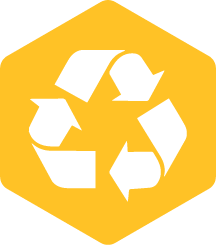On packaging we find a whole range of different marks that inform consumers about the packaging material and recycling, how to handle waste packaging, and compliance with EU legislation. Some marks promote sustainable practices, others carry information about the amount of packaging and the shelf life of the product. Certain EU packaging marks are used on the basis of a certificate, others can be included on the packaging arbitrarily. Do you know what they mean, and which ones are mandatory packaging marks?
Packaging marks are crucial for B2B users and companies, testifying to compliance with legislation, demonstrating environmental certification and informing end customers. They are used to ensure transparency regarding recycling, material composition, and safety and quality standards. Mandatory marks that must be observed include: CE for compliance with EU regulations, WEEE for electronic products, the Euro-leaf for organic food and the open jar or hourglass symbols for cosmetic products. When applying EU packaging marks, they must be clearly visible and legible. Marks related to recycling and packaging material (e.g. the Mobius loop, FSC and PAP marks) are usually placed on the bottom or back of the packaging, while safety marks (CE, WEEE, nominal quantity ℮) must be placed near key product information. Correct placement of marks ensures compliance with regulations and raises the profile of the product as safe and environmentally friendly.
This page summarises the most commonly used EU packaging marks. To make packaging design easier for you, we have prepared PDF documents of marks that you can download to your computer.


